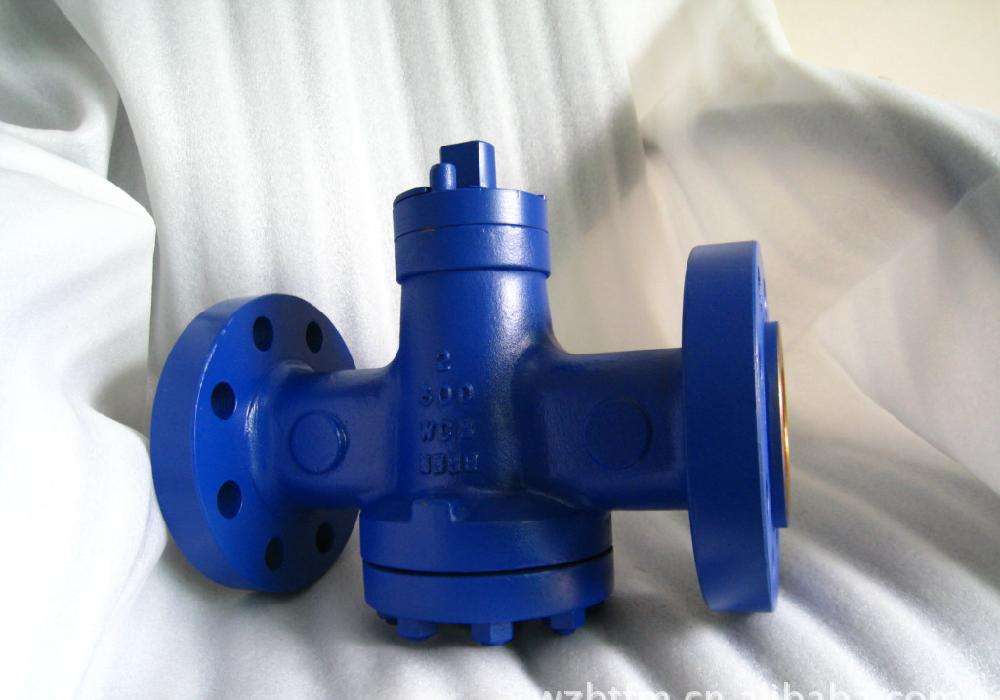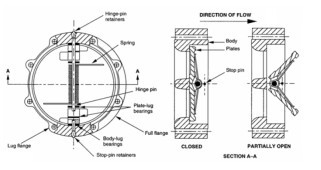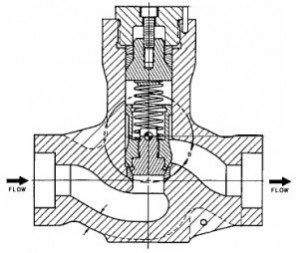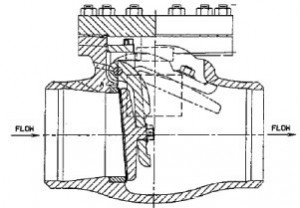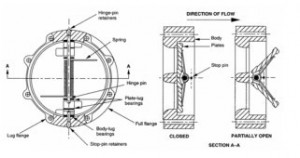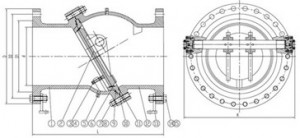Check valves are automatic in operation and designed to prevent reversal of flow in fluid piping systems. So when the medium is back-going, valve disc will automatically close to avoid accidents. The check valves are maintained open by the flow of fluid in the forward direction and are closed by a spring force, or by the weight of the closing mechanism, or by back pressure of the fluid.
Dual plate check valve , one type check valve, typicaly see with wafer dual plate check valve, lug type dual plate check valve, flanged dual plate check valve, as per connection type, butt weld is very rare. It is also called split disc check valve, butterfly check valve(like a butterfly valve, this type valve has more similar structure with butterfly valve, compare with gate, globe, ball valve), duo disc spring loaded check valve(double disc with spring).
SGV offer dual plate check valve with stainless steel trim, usually CF8, CF8M, CF3,CF3M,(304, 316,304L,316L) Duplex steel, carbon steel disc is available but not suggested, Enconel spring, metal seating, is our noraml combination( with stem, spring, washer, gasket, hex nut and other necessary fittings).
It is designed to overcome the size and pressure drop limitations of the swing and disc type wafer check valves (somebody think dual plate is also swing type check valve ). It has many available types or modes so as to meet the generally complex and specific requirements, both in the industrial process and the daily life.
The disc(two plates) of dual plate check valves are held against the seat by a torsion spring mounted on the hinge. And the external mounted retainer pins of valve are needed to hold the hinge in the centre of the flow path. Besides, an improved design secures the hinge internally and the valve mechanism is entirely sealed within the body so to prevent out leakages caused by retainer pin effectively.
Usually Applied Standard:
Design and manufacture: API594, API6D, JB/T8937.
Pressure-Temperature grade: ANSIB16,34, DIN2401, GB/T9124, HG20604, HG20605, SH3406, JB/T74, ANSI B16.34 Length of structure (face to face,end to end): API594, API6D, DIN3202, JB/T8937 Inspection and test : API598, JB/T9092 Pipe flange:APIT605,ASMEB16.47,ANSIB16.5,DIN2543~2548,JB/T74~90,GB/T9112/9124, HG20592~20635, SH3406, GB/T13042,
